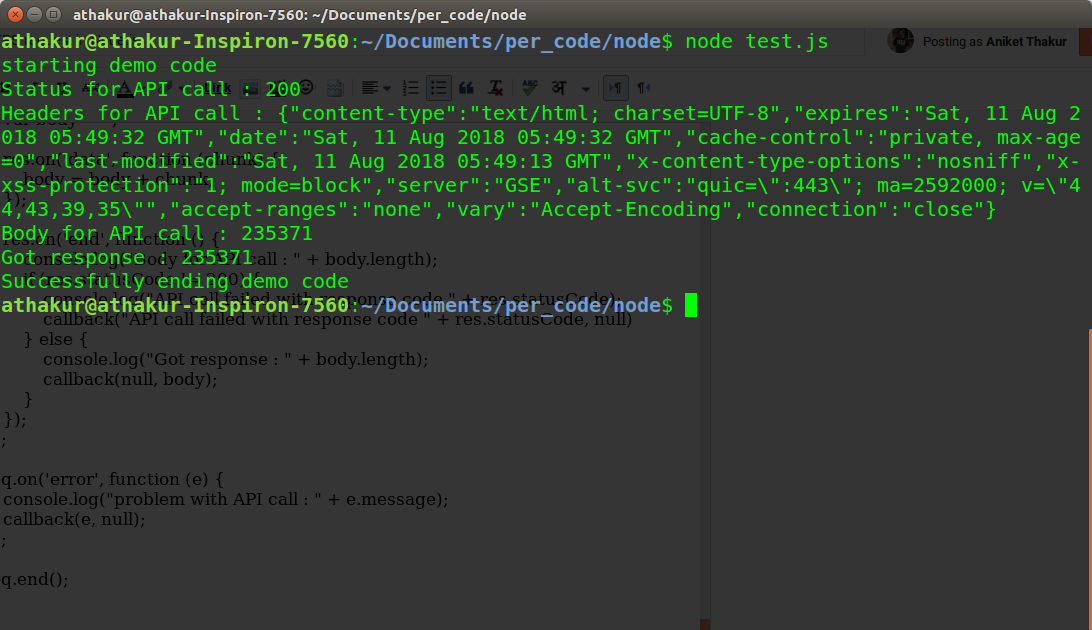

- NODEJS HTTP REQUEST HOW TO
- NODEJS HTTP REQUEST INSTALL
- NODEJS HTTP REQUEST PATCH
- NODEJS HTTP REQUEST FULL
- NODEJS HTTP REQUEST CODE
Three parameters are adopted by this callback.

NODEJS HTTP REQUEST INSTALL
To install Express, use the following command, npm install express -save
NODEJS HTTP REQUEST FULL
This helps the express-generator tool to install, thereby generating a full express app.
NODEJS HTTP REQUEST HOW TO
Step by Step guide on how to build secure Node.js rest APIs in 05 minutes Preparatory Instructions Experts believe node.js is capable of working in multiple environments and that is the major contributor to its acceptance as a framework that supports the development of an effective and efficient API. A real-time API that is dynamic can be built using node.js.Ĭreating a two-way channel for IT solutions, node.js creates circulation in a data-friendly manner. Node.js provides wonderful support to developers for the development of API.

Its ORM/ODM validates every kind of access to the API database. Node.js best security practices make it easy for developers to catch any kind of security vulnerability. With node.js, a developer does not need to worry about development process standards that will make an API functional across multiple interfaces Security Additionally, node.js also allows building an API that is scalable and secure too Standardized developmentĪn API may function even in unprecedented infrastructures so before you build an API, you must know the standard processes across industries. Using a single thread, all the related tasks are quickly performed. Advantages of building APIs in Node.js EfficiencyĪ key factor when using node.js is the speed that it renders to the API.
NODEJS HTTP REQUEST PATCH
My idea was to monkey patch Axios's request methods to inject my own logic before a request is sent and after the response is received.JSON is the most generally popular file format to use because, despite its name, it’s language-agnostic, as well as readable by both humans and machines. After trying to intercept the traffic directly through the low-level http module, I opted for a more higher-level solution.

My first attempt was ok, but far from perfect. Therefore, my only option was really option 2.
NODEJS HTTP REQUEST CODE
Therefore, it would make it difficult for everyone to go back and refactor their code to use this new library. Unfortunately, the project I work on consists of many microservices owned by different teams. In an ideal world, I would have chosen option 1 since it would be the simplest. Create a library that wraps an HTTP client library like Axios.Using makes it straightforward to intercept HTTP traffic on your backend app.įor my use case, there were two options I could think of for capturing the HTTP traffic: Therefore, the solution had to be as seamless as possible so that it could be easily integrated into any of the services. This would have been a fairly straightforward task, but our backend is composed of many services (and many repos). As part of a project at work, I had to develop a way to intercept and store HTTP traffic for any given backend application (microservice in this case).


 0 kommentar(er)
0 kommentar(er)
